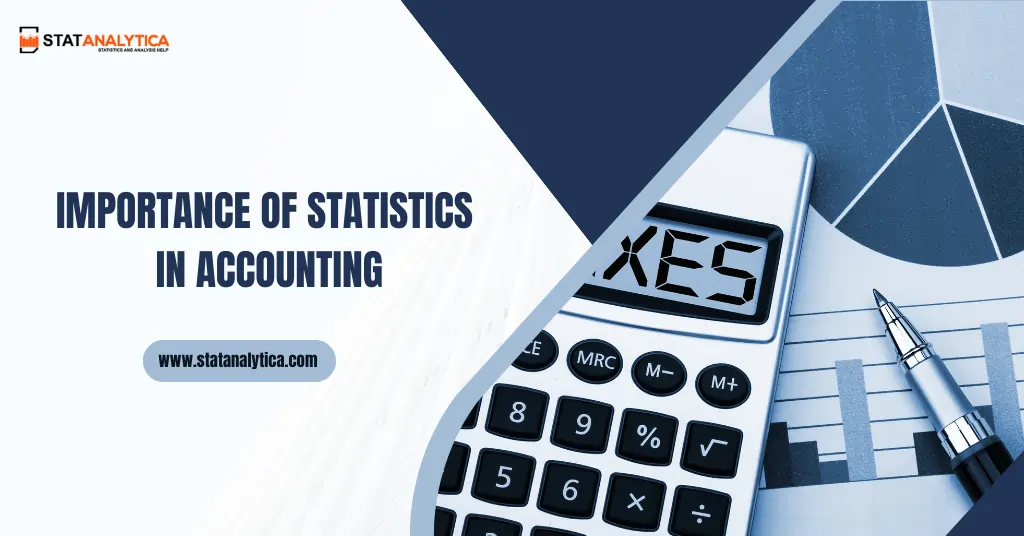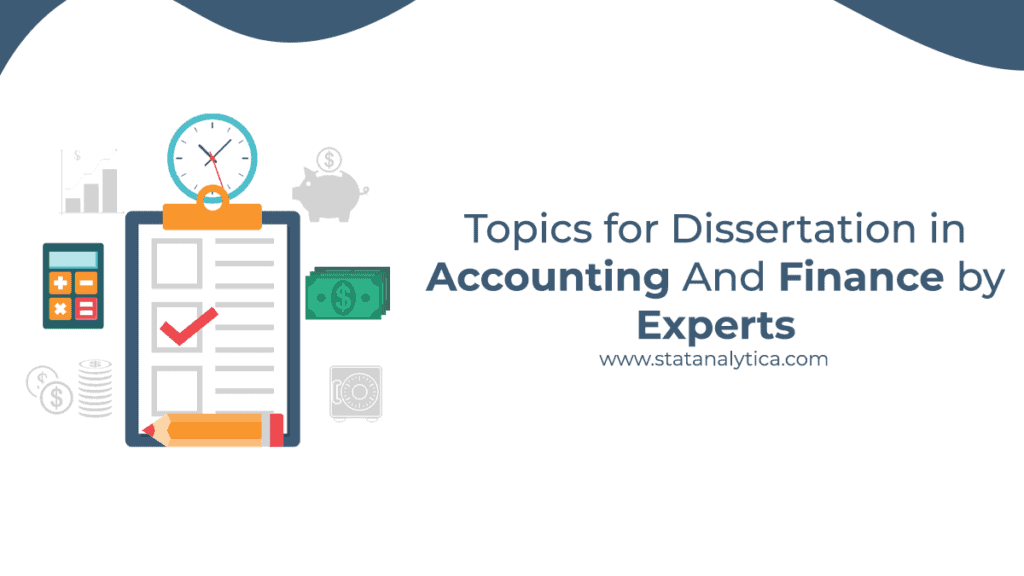In today’s world, where data is constantly being generated and consumed at an unprecedented pace, accurate and reliable information is more important than ever. This is particularly true in the field of accounting, where financial decisions are made based on the analysis of large amounts of data. In order to make informed decisions, accounting professionals need to have a strong understanding of statistical methods and how to apply them to financial data.
In this blog, we will explore the importance of Statistics in Accounting and why it is essential for financial success. From understanding the basics of statistical analysis to the importance of data accuracy, we will delve into the key ways in which statistics impacts the field of accounting.
What is Statistics ?
Table of Contents
Before understanding the Importance of Statistics in Accounting, let us understand first what is statistics.
Statistics is a branch of mathematics that deals with the collection, analysis, interpretation, presentation, and organization of data. It involves methods for summarizing, describing, and drawing conclusions from data, as well as techniques for estimating the reliability and variability of data. Statistics is used in various fields, including business, science, medicine, social sciences, and engineering, to help make informed decisions based on data.
The goal of statistics is to make sense of complex data and provide insights that can be used to guide decision-making and improve understanding of the world around us.
Importance of Statistics in Accounting
Statistics plays a crucial role in accounting because financial decisions are often made based on the analysis of large amounts of data. Here are some of the key reasons that reflect Importance of Statistics in Accounting:
1. Data Analysis
Accounting professionals need to analyze and interpret financial data to make informed decisions. Statistics provides tools and techniques to analyze financial data, identify patterns, and draw meaningful conclusions.
2. Performance Measurement
Statistics allows accounting professionals to measure the performance of businesses and individuals based on financial data. This can help identify areas where improvements can be made, as well as areas of strength. Statistics play a crucial role in enabling accounting professionals to measure the performance of businesses and individuals through financial data analysis. This valuable insight facilitates the identification of areas for improvement and highlights existing strengths. For the most accurate and efficient financial analysis, many businesses are turning to the best accounting outsourcing services to leverage expert statistical expertise.
3. Risk Assessment
Statistics can be used to assess the risk associated with financial decisions. By analyzing data, accounting professionals can identify potential risks and take steps to mitigate them.
4. Forecasting
Statistics can help accounting professionals forecast future financial performance based on historical data. This can help businesses make informed decisions about investments, budgeting, and resource allocation.
5. Compliance
Statistics can be used to ensure compliance with laws and regulations. For example, statistics can help identify trends in financial data that may indicate fraud or other illegal activities.
The use of statistics in accounting is essential for accurate financial reporting, informed decision-making, and maintaining the integrity of financial data.
Pros and Cons of Using Statistics in Accounting
After discussing the Importance of Statistics in Accounting, let us discuss its pros and cons.
Statistics plays an important role in accounting to analyze and interpret financial data. While there are several benefits to using statistics in accounting, there are also some potential drawbacks to consider.
Pros of Using Statistics in Accounting
1. Accurate Data Analysis
Statistics can help in accurately analyzing and interpreting financial data, enabling accountants to make more informed decisions. By using statistical methods, accountants can identify trends and patterns in financial data, which can help them to develop better forecasting models, identify areas of potential financial risk, and optimize financial performance.
2. Data Visualization
Statistics provides an effective way to represent data in a visual format. By using graphs, charts, and tables, accountants can easily communicate financial data to stakeholders in a clear and concise manner.
3. Improved Efficiency
The use of statistical tools and software can help to automate several accounting processes, improving overall efficiency and reducing the likelihood of errors.
4. Compliance
Statistics can be used to ensure compliance with regulatory requirements, such as tax laws, financial reporting standards, and auditing requirements.
Cons of Using Statistics in Accounting
1. Data Integrity
The accuracy of statistical analysis depends on the quality of the underlying data. If the data used in statistical analysis is inaccurate or incomplete, the results of the analysis may be unreliable.
2. Complexity
Statistical analysis can be complex, requiring specialized knowledge and expertise. Accountants may require additional training and education to effectively utilize statistical tools and methods.
3. Cost
The cost of implementing statistical tools and software can be significant, particularly for smaller businesses or organizations.
4. Misinterpretation
Misinterpretation of statistical analysis results can lead to incorrect conclusions and poor decision-making. It is important to ensure that those utilizing statistical tools and methods have a solid understanding of statistical principles and best practices.
Read More
30+ Importance of Statistics in Accounting In 2023
To demonstrate the importance of Statistics in Accounting, here let us explore 30+ importance of Statistics in Accounting:
1. Financial Statement Analysis
Statistics is used to analyze financial statements, including balance sheets, income statements, and cash flow statements.
2. Budgeting
Statistics is used to forecast future financial statements and to create budgets.
3. Auditing
Statistics is used to perform audit procedures, such as sampling and statistical inference.
4. Cost Analysis
Statistics is used to analyze the cost behavior of a business and to determine the most cost-effective way to produce goods and services.
5. Pricing
Statistics is used to determine the optimal price for a product or service based on consumer behavior and market conditions.
6. Capital Budgeting
Statistics is used to evaluate investment opportunities and determine the expected return on investment.
7. Risk Analysis
Statistics is used to assess the risk associated with an investment or financial decision.
8. Performance Evaluation
Statistics is used to evaluate the performance of a business, including profitability, efficiency, and productivity.
9. Fraud Detection
Statistics is used to detect and prevent fraud in financial transactions.
10. Financial Modeling
Statistics is used to create financial models to predict future financial performance.
11. Credit Analysis
Statistics is used to evaluate the creditworthiness of potential borrowers.
12. Inventory Management
Statistics is used to analyze inventory levels and reorder points.
13.Cash Management
Statistics is used to analyze cash flow patterns and to determine optimal cash balances.
14. Tax Planning
Statistics is used to analyze tax data and to develop tax planning strategies.
15. Investment Analysis
Statistics is used to analyze investment opportunities and to determine the expected return on investment.
16. Financial Forecasting
Statistics is used to forecast future financial performance and to identify trends.
17. Ratio Analysis
Statistics is used to calculate financial ratios, such as liquidity ratios, profitability ratios, and solvency ratios.
18. Variance Analysis
Statistics is used to analyze the difference between actual and budgeted financial performance.
19.Sales Forecasting
Statistics is used to forecast sales volumes and revenues.
20. Market Research
Statistics is used to analyze market data and to identify trends and opportunities.
21. Pricing Strategy
Statistics is used to develop pricing strategies based on consumer behavior and market conditions.
22. Financial Planning
Statistics is used to develop financial plans and to set financial goals.
23. Break-even Analysis
Statistics is used to determine the break-even point of a business.
24. Time Series Analysis
Statistics is used to analyze time series data, such as stock prices and sales data.
25. Regression Analysis
Statistics is used to analyze the relationship between variables, such as the relationship between sales and advertising expenses.
26. Monte Carlo Simulation
Statistics is used to simulate various scenarios and to determine the probability of different outcomes.
27. Hypothesis Testing
Statistics is used to test hypotheses about financial data.
28. Decision Analysis
Statistics is used to analyze different options and to determine the best course of action.
29. Sensitivity Analysis
Statistics is used to analyze the impact of changes in variables on financial performance.
30. Portfolio Analysis
Statistics is used to analyze the risk and return of investment portfolios.
31. Time Value of Money Analysis
Statistics is used to analyze the value of money over time and to determine the present value and future value of cash flows.
These are just a few examples of the many applications where statistics is used in accounting. Statistics is a powerful tool that can help accountants make better financial decisions, and it is an essential skill for anyone working in the field of accounting.
Role of statistics in accounting
Statistics plays a vital role in accounting by providing a framework for collecting, analyzing, and interpreting financial data. Here are some of the key roles that statistics plays in accounting:
- Data Collection
Statistics is used to collect financial data, such as revenue, expenses, and assets, from various sources, including financial statements, tax returns, and internal accounting systems.
- Financial Reporting
Statistics is used to prepare financial reports, such as income statements, balance sheets, and cash flow statements, which provide a comprehensive picture of a company’s financial performance.
- Forecasting
Statistics is used to forecast future financial performance based on past trends and data, which can help accountants anticipate potential risks and opportunities.
- Budgeting
Statistics is used to create budgets that allocate financial resources efficiently and effectively, ensuring that the company is operating within its means.
- Auditing
Statistics is used in auditing to determine the reliability of financial statements, identify fraud or errors, and ensure compliance with regulatory requirements.
- Performance Evaluation
Statistics is used to evaluate the financial performance of a company, including profitability, liquidity, and solvency, and to compare it with industry benchmarks.
- Risk Management
Statistics is used to identify potential risks and develop strategies to manage them effectively, including insurance and financial hedging.
- Decision-Making
Statistics is used to provide quantitative information to support decision-making processes, such as pricing decisions, capital budgeting, and investment analysis.
Conclusion
In the world of accounting, where precision and accuracy reign supreme, statistics emerges as a formidable ally, empowering accountants and financial professionals to make informed decisions and drive success. Throughout this exploration of the importance of statistics in accounting, we have witnessed its transformative power and the invaluable role it plays in shaping the financial landscape.
By harnessing statistical techniques, accountants can analyze and interpret vast amounts of financial data, uncovering meaningful insights that inform strategic planning, risk assessment, and performance evaluation. Statistics enables professionals to measure trends, detect anomalies, and make data-driven projections, paving the way for effective decision-making and efficient resource allocation.
Moreover, statistics serve as the bedrock for financial reporting, enabling the creation of reliable financial statements that instill trust and transparency among stakeholders. Whether it’s calculating key financial ratios, estimating probabilities, or conducting audits, statistics ensure the integrity and credibility of financial information.
In conclusion, the integration of statistics in accounting propels the field to new heights, enhancing its ability to provide valuable insights, mitigate risks, and drive financial success. As technology advances and data becomes increasingly abundant, the role of statistics in accounting will only grow in importance. Embracing statistical techniques empowers accountants to navigate the complexities of the modern financial landscape, solidifying their position as trusted advisors and guardians of fiscal responsibility.

